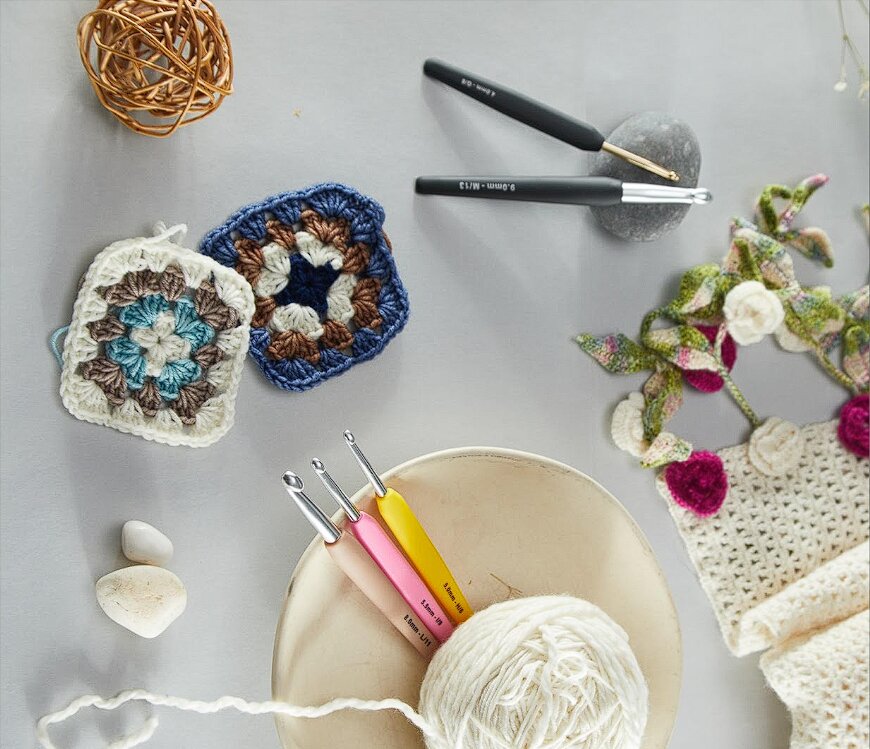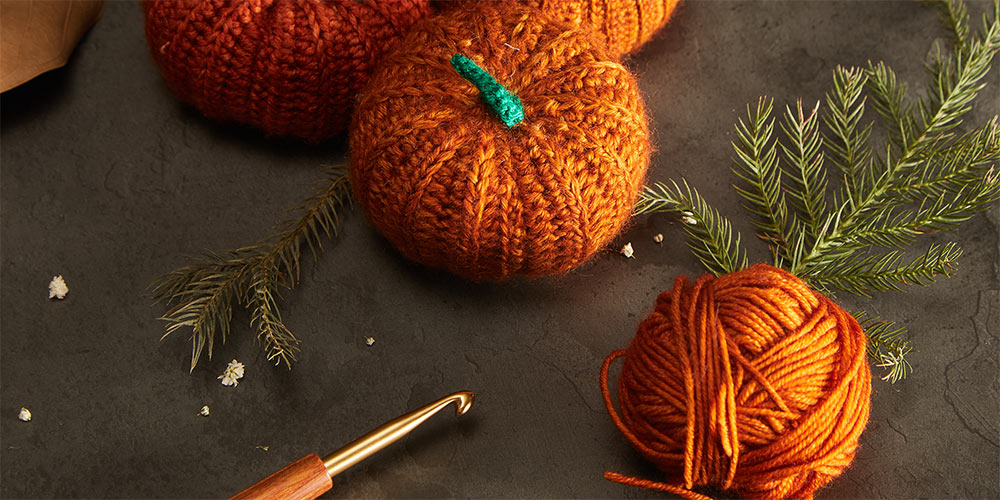Do you love to create snuggly yarn creatures? Amigurumi is the art of crocheting stuffed creatures with single-ended crochet hooks . The adorable craft is not just for advanced makers; even beginners can easily step into the world of yarn loops and amigurumi patterns. If you are overwhelmed with the sheer intricacies of crocheting, we have the beginner's guide to Amigurumi. We'll discuss the steps and applications of the basic stitches and techniques for aspiring amigurumi enthusiasts to create cuddly companions!
Getting Started with Amigurumi Crocheting
Amigurumi is a Japanese art of crocheting where 'ami' means crocheted or knitted, and "Kurumi" means wrapping, as in "nuigurumi" sewn stuffed doll. Amigurumi crochet projects may look complicated as they are many tiny details, but the stitches and techniques for a project are actually quite simple. Almost all amigurumi projects are done with basic double-crochet stitches (UK patterns)/single-crochet stitches (US patterns). Crochet techniques, including increases and decreases, are used for shapes and designs. The magic circle technique is a modified way to start a project in the round is helpful.
Following a pattern is recommended for beginner projects. Whether you work with written instructions or a chart, you can find patterns that both assist you with projects. But first, ensure you understand the terminology, as crochet terms differ in different parts of the world. Refer to our guide on UK vs US terminology for better understanding.
Gather Your Supplies
For practice or even when starting with your projects, here is what you need.
Crochet Hooks – Amiguirumi works with single-ended crochet hooks like traditional crocheting. Make sure to work with the right size matching the yarn weight. Generally, the smaller sizes of crochet hooks are used in crocheting stuffed toys, so you need a dense and tight fabric. You can proceed with one if you have interchangeable crochet hooks , but do not attach the cord. The key to comfortable Amigurumi crochet is to work with smooth crochet hooks that fit in your hands and do not cause fatigue even when you have to ensure tight tension.
Yarn—Amigurumi crochet is colorful, so you'll use many colors of yarn. You can work with any fiber, but if it requires frequent washes, choose superwash merino wool. Patterns will instruct on the yarn weight and colors to create the stuffed toy accurately.
Stitch Markers—Frequent stitch repeats and changes require stitch markers, which are essential for marking those stitches. Choose split or locking stitch markers for the job.
Wool/ Tapestry Needle—An essential crafting accessory, a wool/ tapestry needle is needed for Amigurumi projects to weave in the yarn's neat ends, add surface stitches, and join the yarn in case of gaps.
Stuffing & Adornments – For Amigurumi crochet projects, stuffing, and adornments are needed. Choose eco-friendly fibers so that children can play with the toys without hassle. Also, keep supplies for safety eyes, ribbons, and other adornments.
Basic Crochet Stitches and Techniques for Amigurumi

As mentioned earlier, Amigurumi projects work with basic crochet stitches and techniques. So, here's what you need to know.
Double Crochet Stitch in UK patterns/ The Single Crochet Stitch in US patterns
You can expand your repertoire with simple variations of single crochet stitches.
Increases And Decreases
After learning the basic crochet stitch, you can create many different shapes. The answer is simple: increases and decreases! These crochet techniques are essential when learning how to crochet Amigurumi, as they assist with shaping your project.
Increases: To create curves and add volume to your Amigurumi, you'll need to increase stitches. The most common method is the double crochet increase (dc inc)/ single crochet increase (sc inc), where you crochet two single crochets into the same stitch below.
Decreases: To shape your Amigurumi and create defined features like ears, tails, limbs, or snouts, you'll need to decrease stitches. The double crochet decrease (dc dec)/ single crochet decrease (sc dec) involves crocheting two single crochets together as one.
Invisible Decrease
Even for decreases, the invisible decrease is most commonly used in amigurumi projects. It serves the same purpose as a standard decrease but gives a much neater appearance.
Magic Ring
The basic crochet technique works for all kinds of projects, such as hats, home accessories, and more. The magic ring, also known as the magic circle, is typically the start of every Amigurumi pattern. Typically, the crocheting project is made in rounds without any visible seams. The biggest advantage of the magic circle over the method of starting traditional crochet projects in the round is that the hole in the middle of the circle is adjustable. You can refer to our guide on how to crochet a magic circle.
Slip Stitch
The slip stitch can be used for various reasons in crochet projects. Similarly, it is used for finishing off a row, adding details, or joining pieces together in Amigurumi.
Turning Chains
Turning chains are necessary for every crochet project and stitch pattern. Understanding this technique allows smooth Amigurumi projects.
With these basic stitches and techniques, get ready to plan your Amigurumi projects. Start with a small toy. You can also refer to our blog on crocheting the cutest animals. KnitPro offers a wide range of crochet hooks for crocheters of all skill levels. Choose from bamboo, wood, stainless steel, and aluminum hooks. Dreamz, Ginger, and Symfonie are wooden hooks, while Waves 2.0 come with aluminium tips with an ergonomic rubber handles, and Zing is available in vibrant colors. The Oasis interchangeable hooks are the latest KnitPro innovation that allows one ergonomic wood handle that comes with the scope to work with hooks from 2mm to 12mm sizes, according to the project.












